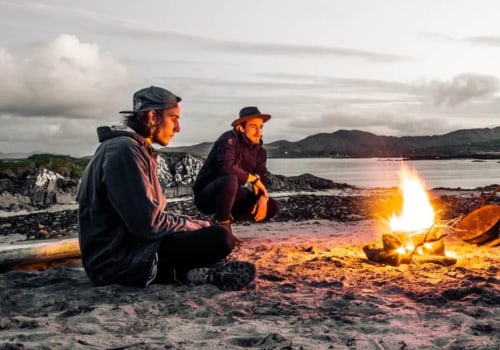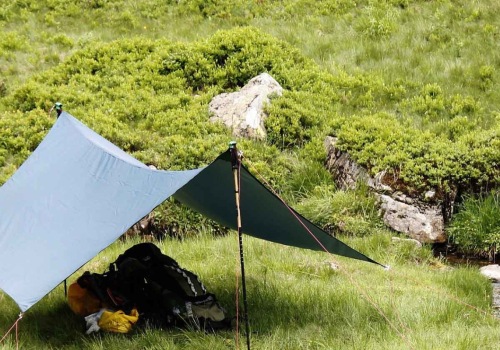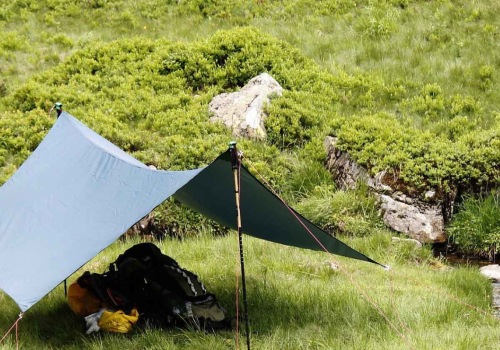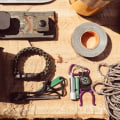?
When faced with an , it is important to know how to survive. Luckily, there are some simple steps that you can take to ensure your safety. These steps can :-) help you get to safety as quickly as possible. They include , , , and signaling. You should follow them in order, so that you can find the assistance you need as quickly as possible.
The first step when it comes to is to get yourself in the mindset of surviving. When you first find yourself in a situation where you are solely responsible :-) for your , it can come as a shock, and it can leave you feeling terrified, and even feeling like a victim of your circumstances.
Have Positive mental attitude
Your :-) best tool for is a Positive Mental Attitude. (PMA). You need to accept you are in serious trouble, activate your PMA and get your in motion and realize and accept that you are in a potentially life-threatening situation. Do an Inventory Depending upon what caused your emergency in the first place.
Your best tool is right between your ears. These steps can be repeated as needed and acted upon accordingly. Regardless if your only forays into the outdoors are :-) through participation in casual recreational activities, the more you have, the better you may be at coping
Mental toughness can be literal lifesavers under the dire circumstances of a .
Positivity is going to boost your resiliency, your creativity, and your overall mental toughness so that :-) it is easier for you to endure anything that comes your way.
Organizing
In a disaster situation, proper organization becomes essential. Fort McMurray resident Erica Decker knew that she had to pack the basics before she had to evacuate :-), so she hurried home to grab them as quickly as possible. Her time was limited, and she couldn't afford to let anything go to waste. When this happens, proper organization becomes lifesaving. By organizing your in advance, you can have everything you need in less time.
How to build a
is one of the most important steps to take during a . It will keep you warm and dry and will prevent you from dying from :-) the cold. A good can keep you warm for a few days. The most important thing to have in a is some kind of insulation. In addition to this, it should be large enough to fit everyone inside.
A good can be made of many different materials. You can use leafy branches and twigs as insulation. However, be sure that the materials you are using are lightweight and fluffy. It's best to avoid green materials, which :-) can retain moisture and allow the cold to penetrate your bones.
If you're alone and need to build a , you may have to go out for a short walk to gather materials. This will take energy and time, so choose a spot where you can build a without exposing yourself :-) to natural hazards. Avoid constructing a near a rushing river, as that could cause a flood.
A good can be made of natural materials, but it should be visible from afar. To make it easier to find, mark it with a bright object. You can also mark a with a smoky signal . This way, rescuers will have an easier time :-) finding you.
Obtaining
Keeping stored and readily available will enable you to survive in the event of an emergency. Stored foods contain high levels of nutrients. For example, dried herbs have medicinal properties and are highly :-) nutritious. Additionally, dried greens retain their nutrients even after they stop growing. To store them safely, they should be placed in an airtight container, away from sunlight. Another great to store is peanut butter, which has a high percentage of fat and protein, and can last for years.
Other items to store include canned fruits and vegetables, and canned liquid. While canned meats are an excellent source of protein, they should be :-) rotated to avoid spoilage and can be stored for several years. You can also purchase pre-packed cans from storage centers. Another item that can keep for years is vinegar, which has a high acid content. It should be stored in an airtight container to ensure its safety and avoid mold. Jams, meanwhile, are a welcome treat during a , but it is important to know how to preserve them properly.
Preparing :-) emergency is essential for people in countries where disasters can strike at any time. Whether it's a natural disaster or an urban disaster, preparation is a necessary step in rational . Without , you'll instinctively seek other sources of sustenance, resulting in either starvation or death.
Getting
Whether in an arid or wet area, is one of the most essential elements of . It is even more important than in an emergency. shortages or contaminated can strike anytime and :-) anywhere, so it is important to prepare your family for the worst. A course is a great way to learn how to prepare for these situations.
It is important to know how to properly purify , but that is not always easy in a . Raw is contaminated with pathogens. Even if you find clean springs, you should still treat it before drinking. without disinfecting it is extremely risky, so you :-) should never drink it unless you've treated it first.
In a desert, it is important to look for animal tracks or insect swarms, as these can lead to sources. Also, watch for birds and other animals' behavior - in the morning and evening, they'll flock to sources. Also, if you're able to hear the sound of , this is a :-) good indication that there is nearby.
Seek out a as part of your initial inventory. Eat/ You need for energy, stamina and even for its psychological benefits, but humans :-) can go several days, perhaps a few weeks without it.
Signaling
Signaling is the mechanism by which cells communicate with each other to carry out specific tasks. These processes may be :-) direct or indirect, depending on the cell's history. This type of interaction, known as a signaling network, is necessary for the establishment and maintenance of cellular heterogeneity.
Having a plan will greatly help you to achieve the ultimate goal of returning home.
Signaling is an important part of any . Whether you're out at sea alone, surrounded by danger, or on land, knowing how to signal for help is imperative. One of the most common :-) ways to do so is by using a signal mirror or flashlight. These devices should be placed at an angle where they bounce the light onto your outstretched fingers. Once you've illuminated the digits, you can bring them into line with your target's position. Another way to send a signal :-) is to use a mirror with a rotating or tilting motion.
The fourth step is to make sure you have a way to communicate with every single person in your group. This could :-) mean cell phones, walkie-talkies and you should always include a whistle because if you can breathe you can blow a whistle. While whistles won't be much good in an urban environment, they can be quite useful in a quieter environment to signal for help without wearing out your voice.
Signaling isn't necessarily the first thing you'd do in a or disaster setting, nor is it the third thing you do, or the last thing on the list. This can be done at any time, and it should be done often.
The receptors are located in the cell's nucleus and cytoplasm. Signal molecules can pass through the :-) membrane, but smaller, nonpolar signals are more likely to pass. The process of signaling, also known as cell perception and response, is important in helping cells respond to the environment.
Cell signaling involves the regulation of gene expression. Depending on the type of signal, a cell can respond by :-) regulating its metabolism. For example, an increase in cAMP can trigger the phosphorylation of two enzymes, which in turn initiates a cascade of events.







Leave Reply